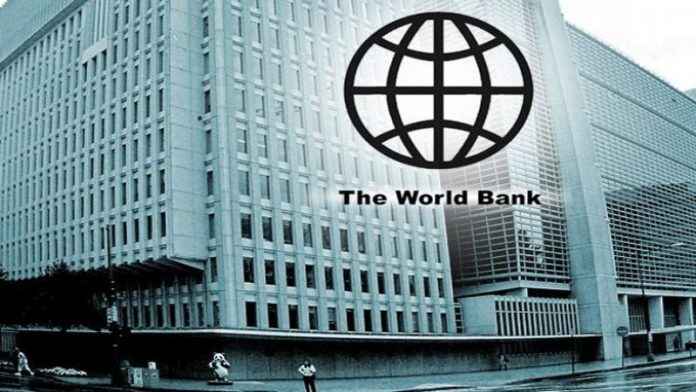The World Bank’s Global Economic Prospects report 2022, released on Wednesday projects that growth in the South Asian region (SAR) will accelerate to 7.6 percent in 2022, as pandemic-related disruptions fade, before slowing to 6.0 percent in 2023.
Growth in Pakistan surprised on the upside last year, supported by improving domestic demand, record-high remittance inflows, a narrow targeting of lockdowns, and accommodative monetary policy, says the bank’s report.
The report projects that Pakistan’s economy will grow by 3.4 percent in the current fiscal and at 4 percent in 2022-23, benefiting from structural reforms enhancing export competitiveness and improving the financial viability of the power sector.
The World Bank has revised growth projections for the region since June 2021, because of “better prospects in Bangladesh, India and Pakistan.”
It also estimates India’s economic growth to be 8.3 percent in the current fiscal year and 8.7 percent in 2022-23. The 8.3 percent GDP growth for the current fiscal year is the same as what the bank projected in October 2021.
The report notes that India’s growth rate in the current and next fiscal years will be stronger than those of its immediate neighbors. The bank predicts Bangladesh’s growth at 6.4 and 6.9 percent in 2021-22 and 2022-23, respectively, while Nepal’s is to grow at 3.9 percent this fiscal and at 4.7 percent in the next.
Monetary policy became more accommodative in SAR as real interest rates went further negative on rising inflation expectations, but still low policy rates. The trend only reversed in Pakistan following a rapid policy rate increase.
Global economic growth, however, will slow down to 4.1 percent this year from an estimated 5.5 percent in 2021, the report adds, warning that “Omicron-related economic disruptions could substantially reduce growth” to as low as 3.4 percent. The report points out that real interest rates in Pakistan dropped precipitously during 2020 and remained negative through 2021. The report notes that both Bangladesh and Pakistan saw their goods trade deficit widen to record levels on strong domestic demand and rising energy prices.
In Pakistan, however, facing fiscal pressures caused real expenditure to contract in 2021.
In Pakistan and Sri Lanka, long-term bond yields have rebounded rapidly in late 2021 reversing the lows reached during the pandemic.
High inflation in Pakistan led to the removal of monetary accommodation. The report expects the region’s monetary policy to tighten but continue to be moderately accommodative in 2022, except in Pakistan where high inflation led to the removal of monetary accommodation.
Although SAR may continue making progress in catching up with advanced-economy per capita incomes, the pace will be slower in the forecast period than in the decade before the pandemic. Fiscal challenges in Pakistan and Sri Lanka are also having a negative impact on SAR’s growth. Per capita incomes may fall further behind advanced economies in 2021 -23 in Bhutan, Nepal, Pakistan and Sri Lanka.
In the subregion excluding India, output in 2023 could remain around 4 percent below pre-pandemic projections.
The report also reviews the Taliban takeover of Afghanistan in August, noting that it led to a rapid cessation of international grant support, and loss of access to overseas assets and the international financial system, driving a humanitarian and economic crisis.
The crisis also disrupted food and energy imports to Afghanistan by causing a shortage of foreign exchange and dysfunction of the financial sector.
“Prices for basic household goods, including food, are rising rapidly, while private sector activity has collapsed,” the report notes. “The humanitarian response is being curtailed by the collapse of the banking sector and an inability to transfer funds internationally.”























